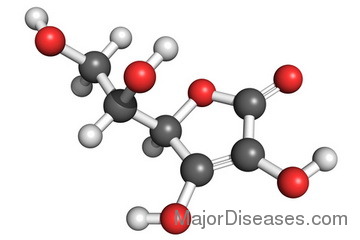Scurvy symptoms and treatment
The innovation of science and technology has come to the rescue of many individuals in light of the many diseases that once ravaged the world. One from such conditions is scurvy disease, previously known as the “disease of pirates”. Scurvy disease is a condition brought about by a lack of vitamin C within the body.
By properly identifying scurvy symptoms and understanding what causes it, we will see natural scurvy treatment options.
Scurvy disease can easily be treated and in many cases prevented.
This brief article aims to provide a better understanding of this disease, along with ways to properly treat it and avoid it, if at all possible.
Identifying The Scurvy Symptoms

The symptoms of scurvy disease are easily identifiable. Scurvy disease is typically identifiable by the following symptoms:
- Swelling and bleeding
- Nausea
- Tenderness in legs
- Irritability
- Fever
- Diarrhea
- Poor Appetite
Although these are the most common symptoms experienced with scurvy disease, many individuals with more severe cases of this condition experience the following:
- Inactive or “paralyzed” joints
- Muscle and joint pain
- Fatigue
- Rapid breathing
- Poor weight gain
Diagnosis of this disease is typically carried out by examining and studying the scurvy symptoms listed above. Various laboratory tests are also performed in order to verify the present levels of vitamin C within the body.
These evaluations are performed by measuring the serum ascorbic acid levels, also known as white blood cell ascorbic acid concentration.
Radiological procedures, in rare cases, may also stimulate the need for diagnosis as well.
What Causes Scurvy Disease?
Scurvy is caused by an extended deficiency of vitamin C within the diet. A deficiency of vitamin C within the diet is often due to a variety of reasons.
Some of the more common reasons for vitamin C deficiency are:
- Lack of knowledge
- Excessive dieting
- Famine
- Anorexia (more popular name is Anorexia Nervosa)
Conditions limiting the ingestion of foods orally
These are the common causes of scurvy disease. However, through proper treatment, the symptoms of scurvy can be easily avoided and in many cases prevented.
Treating Symptoms of Scurvy Disease
Scurvy disease can easily be treated. Treatment of scurvy disease involves compensating for the lack of vitamin C within the body, often through injection or via the mouth (orally).
Consuming foods rich in vitamin C are also recommended, combined with the ingestion of additional vitamin supplements. Various fruits rich in vitamin C include:
- Mangoes
- Peaches
- Nectarines
- Lychees
- Raspberries
- Grapefruit
- Clementine
- Kiwi fruit
- Oranges
- Papayas
- Lemons
- Strawberries
These are just a few of the recommended fruits for consumption, seeing as they are high in vitamin C.
Vegetables should also be included within ones’ diet to offset or prevent scurvy disease.
Recommended vegetables for consumptions include:
- Broccoli
- Brussels sprouts
- Spring greens
- Peppers
- Cauliflower
- Peas
- Mange-tout
- Curly kale
- Green cabbage
- Tomatoes
- Gourds
Consuming these vegetables, combined with a variety fruits, easily offset and help to prevent the scurvy symptoms.
Elderly people and children are often the most susceptible to this disease and should thereby take the most precaution. Scurvy disease is not as severe as it once was, but through the consumption of proper amounts of vitamin C within ones’ diet, it can be easily be treated and avoided.

Leave a Reply